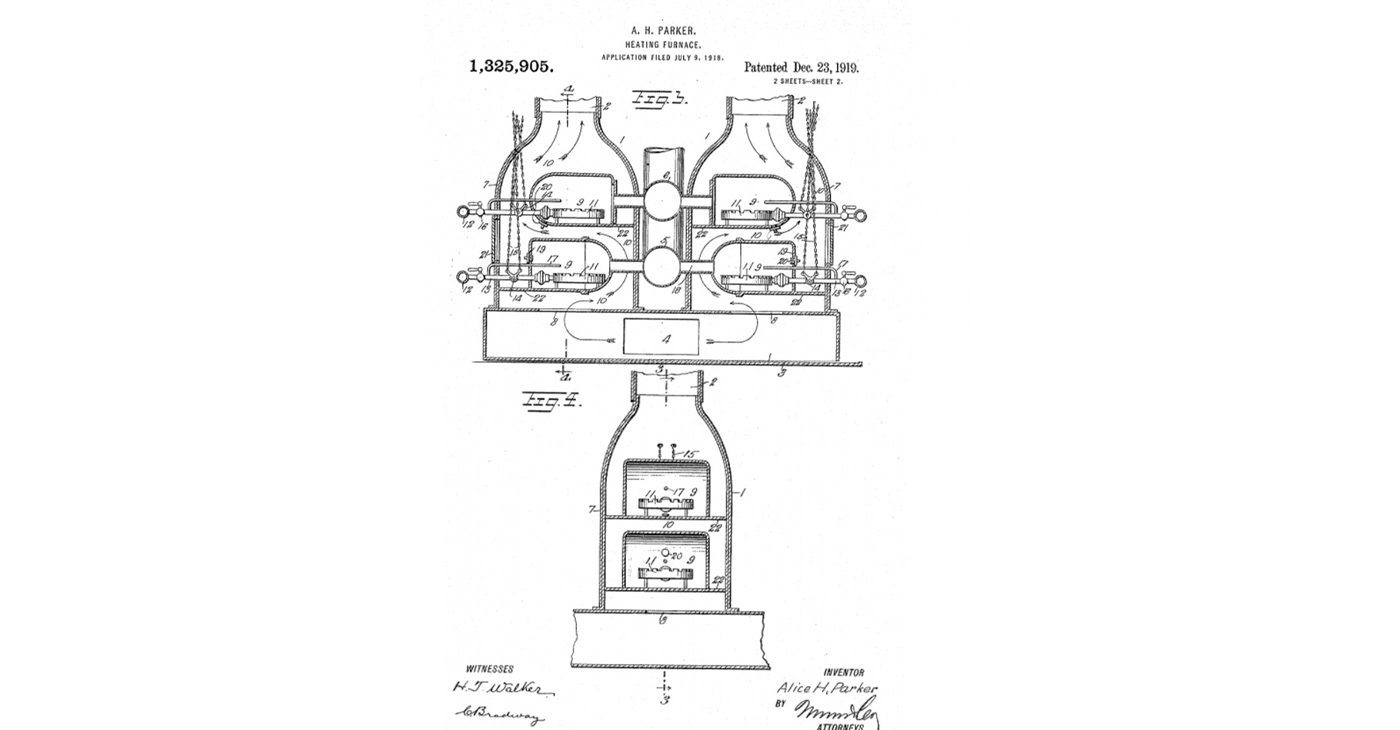National
‘Birth of a Nation’ — 100 Years On, Debate on Film Endures

This 1914 file photo shows a scene from D.W. Griffith’s “Birth of a Nation” movie depicting Ku Klux Klan members riding horses against soldiers, filmed in the Hollywood section of Los Angeles. (AP Photo)
HILLEL ITALIE, AP National Writer
NEW YORK (AP) — One hundred years ago this spring, Hollywood came of age in a blaze of wonder and fury.
D.W. Griffith’s three-hour Civil War epic, “The Birth of a Nation,” was released in April 1915 after a special showing in March at President Woodrow Wilson’s White House. It is widely recognized as a blueprint for the feature-length movie and as a showcase for Griffith’s Tolstoyan command of historical narrative, from the battlefield to the front porch.
But one of the greatest glories in movie history is also one of its lasting shames. Within Griffith’s lovingly assembled images is a story that glorified the Ku Klux Klan, demonized blacks and sealed the misconception that the Reconstruction era in the South was a disastrous experiment in racial equality.
So now, at the film’s centennial, an industry that loves and thrives on honoring its past may allow one of its defining moments to go largely unobserved.
Turner Classic Movies, one of the prime outlets for silent cinema, is uncertain how or whether to mark the anniversary, said Charles Tabesh, senior vice president.
“It’s not just something you can put in the schedule,” he said. TCM has occasionally aired the film, which is in the public domain, but he explained, “We’ve provided an introduction and explained why it’s on, but even with that, we’ve gotten responses ranging from minor complaints to a lot of people who were really upset about it. It’s difficult because for a channel like Turner Classic Movies you can’t just avoid it. It wouldn’t be appropriate to pretend it was never made.”
No film before had so forcefully, or painfully, demonstrated that the big screen could challenge the novel and textbook as a way of interpreting and thinking about the past. James Baldwin would damn it as “an elaborate justification of mass murder.” Eric Foner, a leading Reconstruction historian, said in a recent interview that the film did “irreparable damage to public consciousness and also to race relations.” Fellow scholar Annette Gordon-Reed calls Griffith both a genius and a “lousy historian.”
Over the past quarter century, “Birth of a Nation” has been enshrined and entombed.
In 1992, to much criticism, the Library of Congress added Griffith’s work to the National Film Registry, calling it a “controversial, explicitly racist, but landmark American film masterpiece.” For decades, the Directors Guild of America awarded a D.W. Griffith Award for lifetime achievement, but dropped the prize in 1999 to “create a new ultimate honor for film directors that better reflects the sensibilities of our society at this time in our national history.”
In 1998, the American Film Institute listed “Birth of a Nation” at No. 44 on a list of the best 100 American movies. The film does not appear on a 2007 AFI “Best 100” list, which instead features “Intolerance,” Griffith’s atonement for “Birth.” A planned screening in 2004 at a Los Angeles theater was canceled because of protests.
The classroom, the DVD and online are the most likely places to see it now. In 2011, Kino Lorber released a DVD and Blu-Ray edition with a restored print, extensive notes and a brief documentary explaining the film’s context. Kino special projects producer Bret Wood says the company receives occasional complaints for selling the film, but that “Birth of a Nation” is consistently among the most purchased silent movies.
“It’s a difficult thing to do — marketing a cinematic masterpiece that is also hate-mongering propaganda — but that in itself is why the film is so powerful,” Wood wrote in an email. “If it were simply a racist film, it would have faded away long ago. But because ‘The Birth of a Nation’ is such a magnificent film (in terms of cinematic artistry in 1915), the cancerous ideology at its core is all the more toxic, and so we find ourselves continuing to discuss it a full century later.”
Jeanine Basinger, a film historian who teaches at Wesleyan University, says “Birth” is taught in different ways. A history professor might screen excerpts to show how some Americans thought of the Civil War, while a film instructor might focus on the film’s aesthetic achievements.
“In film departments, we aren’t teaching content, we are teaching the medium itself and its development,” Basinger says.
“The Birth of a Nation” is historical drama, but for the director it was something close to emotional autobiography. David Wark Griffith was born in Kentucky in 1875, just a decade after the Civil War ended. His father was a lieutenant colonel in the Confederate Army, and Griffith grew up in the early Jim Crow era. Although Kentucky was a border state that did not secede and was relatively unaffected by Reconstruction, Griffith related to the source material for “Birth of a Nation,” Thomas Dixon’s novel and play “The Clansman.”
“Griffith did not question the core assumption of Dixon’s story: that blacks, once the supposedly benevolent bonds of slavery had been overthrown, became violent and threatening to whites, especially women,” says Melvyn Stokes, author of “D.W. Griffith’s The Birth of a Nation.”
He was a man of the late 19th century mastering the tools of a revolutionary medium of the 20th century — moving images. After several years of acting and script writing, he directed his first movie, in 1908. By 1914, Griffith was among the country’s top directors.
“As he refined and developed his filmmaking art, he became ambitious to do longer, more ‘epic’ films,” Stokes said, noting that Griffith had studied the Italian production “Quo Vadis” and a French production, “Queen Elizabeth.”
“He was also keen to produce works like these based on history, since historical subjects were seen as a means of making motion pictures ‘respectable’ and appealing to the more lucrative, middle-class audience.”
In making “Birth of a Nation,” Griffith wedded mass spectacle and groundbreaking art and helped change forever the role of movies and what they could achieve.
Earlier films often lasted less than an hour and were completed within days. “Birth of a Nation” took six months to produce, had a running time of 195 minutes and employed hundreds of actors. Griffith’s epic also helped popularize such techniques as the panoramic shot, the panning shot and the tinting of the lens. The battlefield scenes, still compelling in their momentum and violence, set the template for countless war movies over the following decades. The soundtrack was among the first to feature a popular theme song.
The film made history before reaching theaters. In March 1915, “Birth of a Nation” became the first moving picture to be screened at the White House, then occupied by Wilson, Thomas Dixon’s former Johns Hopkins University classmate and fellow Southerner.
The White House event resulted in one of film’s most famous blurbs. “It is like writing history with lightning. And my only regret is that it is all so terribly true,” Wilson was supposed to have commented. Biographer A. Scott Berg is almost certain he never said it.
“The line does not appear for decades — not even in Dixon’s unpublished memoirs,” Berg wrote in an email, adding that Wilson was known for his reactionary views on race. “I suspect that it got cobbled together as civil rights became more of an issue and people looked back on ‘Birth of a Nation,’ seeing it through new and more enlightened eyes. And, as Wilson’s stock in the area of civil rights sank, it became an easy quotation to attribute to him.”
Virtually everything about “Birth of a Nation” was outsized and new. Moviegoers were charged $2 a ticket (around $46 in 2015) at a time when you could see an afternoon of comedy shorts for pennies. The film helped mark the transition from nickelodeons to gilded movie “palaces.” The cast included some of the greatest directors of the talking era, among them Raoul Walsh (who played John Wilkes Booth) and John Ford (who played a Klansman).
In theaters, whites reveled and rampaged. In Lafayette, Indiana, a white man killed a black teen after seeing the movie. The Ku Klux Klan used the film for decades to recruit members.
The NAACP, founded just a few years earlier, demanded that a few especially racist scenes be deleted and despaired over the damage.
“The harm it is doing the colored people cannot be estimated,” wrote the association’s secretary, Mary Childs Nerney. “I hear echoes of it wherever I go and have no doubt that this was in the mind of the people who are producing it. Their profits here are something like $14,000 a day and their expenses about $400.”
His influence acknowledged even by his detractors, Griffith was revered by Orson Welles and Stanley Kubrick, among others. Leading critics have praised “Birth of a Nation’ on artistic grounds, and even moral grounds. Roger Ebert wrote that Griffith “demonstrated to every filmmaker and moviegoer who followed him what a movie was, and what a movie could be.” James Agee, mourning Griffith’s death in 1948, wrote: “For all its imperfections and absurdities it is equal, in fact, to the best work that has been done in this country. And among moving pictures it is alone…”
The Tennessee-born Agee lamented that criticism of the movie had led to its being restricted, or abridged. “At best, this is nonsense, and at worst, it is vicious nonsense. Even if it were an anti-Negro movie, a work of such quality should be shown, and shown whole. But the accusation is unjust. Griffith went to almost preposterous lengths to be fair to the Negroes as he understood them, and he understood them as a good type of Southerner does.”
Black filmmakers responded forcefully to “Birth of a Nation,” and across generations. In 1919, Oscar Micheaux made “Within Our Gates,” a blunt portrait of white violence and among the earliest surviving movies by a black director. In 1980, Spike Lee was a film major at New York University when he completed the 20-minute “The Answer,” in which a young black screenwriter is asked by a Hollywood studio to turn out a script for a remake of “Birth of a Nation.”
Paul D. Miller, aka the hip-hop and performance artist DJ Spooky, saw “Birth of a Nation” while attending Bowdoin College and recalled how it echoed in his mind “because of so many of the issues that keep resurfacing in American culture.” In 2004, DJ Spooky premiered “Rebirth of a Nation,” a multimedia stage event and later a film that remixed excerpts from Griffith’s movie with contemporary images, music and commentary.
Miller finds “Birth of a Nation” so influential, technically and aesthetically, he even thought about it while designing his iPad app.
“As much as possible I want to think about mobile media as the inheritors of the cinematic imaginary,” he wrote in an email. “Cell phones, tablets, and other portable media have set the stage for a new kind of multimedia experience. ‘Birth of a Nation’ set the tone for that as well.”
Copyright 2015 The Associated Press. All rights reserved. This material may not be published, broadcast, rewritten or redistributed.
Arts and Culture
In ‘Affrilachia: Testimonies,’ Puts Blacks in Appalacia on the Map

By Terri Schlichenmeyer
The Bookworm Sez
An average oak tree is bigger around than two people together can reach.
That mighty tree starts out with an acorn the size of a nickel, ultimately growing to some 80 feet tall, with a canopy of a hundred feet or more across.
And like the new book, “Affrilachia” by Chris Aluka Berry (with Kelly Elaine Navies and Maia A. Surdam), its roots spread wide and wider.
Affriclachia is a term a Kentucky poet coined in the 1990s referring to the Black communities in Appalachia who are similarly referred to as Affrilachians.
In 2016, “on a foggy Sunday morning in March,” Berry visited Affrilachia for the first time by going the Mount Zion AME Zion Church in Cullowhee, North Carolina. The congregation was tiny; just a handful of people were there that day, but a pair of siblings stood out to him.
According to Berry, Ann Rogers and Mae Louise Allen lived on opposite sides of town, and neither had a driver’s license. He surmised that church was the only time the elderly sisters were together then, but their devotion to one another was clear.
As the service ended, he asked Allen if he could visit her. Was she willing to talk about her life in the Appalachians, her parents, her town?
She was, and arrangements were made, but before Barry could get back to Cullowhee, he learned that Allen had died. Saddened, he wondered how many stories are lost each day in mountain communities where African Americans have lived for more than a century.
“I couldn’t make photographs of the past,” he says, “but I could document the people and places living now.”
In doing so he also offers photographs that he collected from people he met in ‘Affrilachia,’ in North Carolina, Georgia, Kentucky, and Tennessee, at a rustic “camp” that was likely created by enslaved people, at churches, and in modest houses along highways.
The people he interviewed recalled family tales and community stories of support, hardship, and home.
Says coauthor Navies, “These images shout without making a sound.”
If it’s true what they say about a picture being worth 1,000 words, then “Affrilachia,” as packed with photos as it is, is worth a million.
With that in mind, there’s not a lot of narrative inside this book, just a few poems, a small number of very brief interviews, a handful of memories passed down, and some background stories from author Berry and his co-authors. The tales are interesting but scant.
For most readers, though, that lack of narrative isn’t going to matter much. The photographs are the reason why you’d have this book.
Here are pictures of life as it was 50 years or a century ago: group photos, pictures taken of proud moments, worn pews, and happy children. Some of the modern pictures may make you wonder why they’re included, but they set a tone and tell a tale.
This is the kind of book you’ll take off the shelf, and notice something different every time you do. “Affrilachia” doesn’t contain a lot of words, but it’s a good choice when it’s time to branch out in your reading.
“Affrilachia: Testimonies,” by Chris Aluka Berry with Kelly Elaine Navies and Maia A. Surdam
c.2024, University of Kentucky Press, $50.00.
Black History
Alice Parker: The Innovator Behind the Modern Gas Furnace
Born in Morristown, New Jersey, in 1895, Alice Parker lived during a time when women, especially African American women, faced significant social and systemic barriers. Despite these challenges, her contributions to home heating technology have had a lasting impact.

By Tamara Shiloh
Alice Parker was a trailblazing African American inventor whose innovative ideas forever changed how we heat our homes.
Born in Morristown, New Jersey, in 1895, Parker lived during a time when women, especially African American women, faced significant social and systemic barriers. Despite these challenges, her contributions to home heating technology have had a lasting impact.
Parker grew up in New Jersey, where winters could be brutally cold. Although little is documented about her personal life, her education played a crucial role in shaping her inventive spirit. She attended Howard University, a historically Black university in Washington, D.C., where she may have developed her interest in practical solutions to everyday challenges.
Before Parker’s invention, most homes were heated using wood or coal-burning stoves. These methods were labor-intensive, inefficient, and posed fire hazards. Furthermore, they failed to provide even heating throughout a home, leaving many rooms cold while others were uncomfortably warm.
Parker recognized the inefficiency of these heating methods and imagined a solution that would make homes more comfortable and energy-efficient during winter.
In 1919, she patented her design for a gas-powered central heating system, a groundbreaking invention. Her design used natural gas as a fuel source to distribute heat throughout a building, replacing the need for wood or coal. The system allowed for thermostatic control, enabling homeowners to regulate the temperature in their homes efficiently.
What made her invention particularly innovative was its use of ductwork, which channeled warm air to different parts of the house. This concept is a precursor to the modern central heating systems we use today.
While Parker’s design was never fully developed or mass-produced during her lifetime, her idea laid the groundwork for modern central heating systems. Her invention was ahead of its time and highlighted the potential of natural gas as a cleaner, more efficient alternative to traditional heating methods.
Parker’s patent is remarkable not only for its technical innovation but also because it was granted at a time when African Americans and women faced severe limitations in accessing patent protections and recognition for their work. Her success as an inventor during this period is a testament to her ingenuity and determination.
Parker’s legacy lives on in numerous awards and grants – most noticeably in the annual Alice H. Parker Women Leaders in Innovation Award. That distinction is given out by the New Jersey Chamber of Commerce to celebrate outstanding women innovators in Parker’s home state.
The details of Parker’s later years are as sketchy as the ones about her early life. The specific date of her death, along with the cause, are also largely unknown.
Activism
U.S. House Minority Leader Hakeem Jeffries Speaks on Democracy at Commonwealth Club
Based on his first speech as House minority leader, “The ABCs of Democracy” by Grand Central Publishing is an illustrated children’s book for people of all ages. Each letter contrasts what democracy is and isn’t, as in: “American Values over Autocracy”, “Benevolence over Bigotry” and “The Constitution over the Cult.”

By Linda Parker Pennington
Special to The Post
House Minority Leader Hakeem Jeffries addressed an enthusiastic overflow audience on Monday at San Francisco’s Commonwealth Club, launching his first book, “The ABCs of Democracy.”
Based on his first speech as House minority leader, “The ABCs of Democracy” by Grand Central Publishing is an illustrated children’s book for people of all ages.
Each letter contrasts what democracy is and isn’t, as in: “American Values over Autocracy”, “Benevolence over Bigotry” and “The Constitution over the Cult.”
Less than a month after the election that will return Donald Trump to the White House, Rep. Jeffries also gave a sobering assessment of what the Democrats learned.
“Our message just wasn’t connecting with the real struggles of the American people,” Jeffries said. “The party in power is the one that will always pay the price.”
On dealing with Trump, Jeffries warned, “We can’t fall into the trap of being outraged every day at what Trump does. That’s just part of his strategy. Remaining calm in the face of turmoil is a choice.”
He pointed out that the razor-thin margin that Republicans now hold in the House is the lowest since the Civil War.
Asked what the public can do, Jeffries spoke about the importance of being “appropriately engaged. Democracy is not on autopilot. It takes a citizenry to hold politicians accountable and a new generation of young people to come forward and serve in public office.”
With a Republican-led White House, Senate, House and Supreme Court, Democrats must “work to find bi-partisan common ground and push back against far-right extremism.”
He also described how he is shaping his own leadership style while his mentor, Speaker-Emeritus Nancy Pelosi, continues to represent San Francisco in Congress. “She says she is not hanging around to be like the mother-in-law in the kitchen, saying ‘my son likes his spaghetti sauce this way, not that way.’”
-

 California Black Media4 weeks ago
California Black Media4 weeks agoCalifornia to Offer $43.7 Million in Federal Grants to Combat Hate Crimes
-

 Black History4 weeks ago
Black History4 weeks agoEmeline King: A Trailblazer in the Automotive Industry
-

 California Black Media4 weeks ago
California Black Media4 weeks agoGov. Newsom Goes to Washington to Advocate for California Priorities
-

 California Black Media4 weeks ago
California Black Media4 weeks agoCalifornia Department of Aging Offers Free Resources for Family Caregivers in November
-

 Activism3 weeks ago
Activism3 weeks agoOakland Post: Week of November 27 – December 3, 2024
-

 Activism4 weeks ago
Activism4 weeks agoOCCUR Hosts “Faith Forward” Conference in Oakland
-

 Activism4 weeks ago
Activism4 weeks agoRichmond Seniors Still Having a Ball After 25 Years
-

 Activism2 weeks ago
Activism2 weeks agoButler, Lee Celebrate Passage of Bill to Honor Congresswoman Shirley Chisholm with Congressional Gold Medal






















































